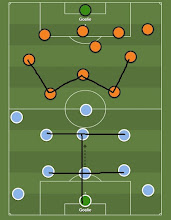A number of notable winter
transfers in five top European leagues this season involving well-known players
may have gone unnoticed.
The winter transfers in major
European leagues were completed on February 1. Several big names have made
moves to save their futures, revive their careers, or simply look for more
minutes on the pitch. The winter transfer window is the best opportunity for clubs
to sign players who can make an immediate impact as the season progresses. Unfortunately,
such is quite tricky. Some clubs succeed, while others may not.
The January transfer window also
allows clubs to sign players who have either been bench warmers, such as England
international Kalvin Phillips, or have failed to live up to expectations, such
as Italian forward Andrea Belotti. Certain clubs also look for additional names
in the squad, sometimes on loan, to provide more competition or to cover for
players who have been sidelined for an extended period of time or are absent
due to their international games in their agenda such as AFCON or the AFC Asian Cup. Bayern's new signings this month, Sascha Boey and Eric Dier, are the
recent examples.
Certain teams at the red zone
even snatch the experienced but unattached figures for free to help them avoid
relegation to the second tier. Former German international Jerome Boateng and
former Ghana international Andre Ayew have agreed to join Serie A side, Salernitana and Ligue 1 team, Le
Havre, respectively. They are normally under a short contract to ensure their
safety in the top flight. Here are some notable winter transfers in the
European top five you may have missed.
Premier League
|
Players - position |
Move |
Fee |
|
Bertrand Traore (28)- FW/AMR |
Aston Villa to Villareal |
Free transfer |
|
Enes Unal (26) - FW |
Getafe to Bournemouth |
Loan |
|
Sergio Reguilon (27) – LB |
Tottenham to Brentford |
Loan |
|
Mahmoud Dahoud (28) -CM |
Brighton to Stuttgart |
Loan |
|
Serge Aurier (31) – RB |
Nottingham to Galatasaray |
100K Euro |
|
Ivan Perisic (34) – AML/ ML |
Tottenham to Hadjuk Split |
Loan |
|
Pablo Fornals (27) – AMC |
West Ham to Real Betis |
8M Euro |
|
Players - position |
Move |
Fee |
|
Caglar Soyuncu (27) – CB |
Atletico to Fenerbahce |
Loan (2M Euro) |
|
Cedric Bakambu (32) – FW |
Galatasaray to Real Betis |
5M Euro |
|
Javier Manquillo (29) – RB |
Newcastle to Celta Vigo |
Free transfer |
|
Agustin Marchessin (33) - GK |
Celta Vigo to Gremio |
Free transfer |
|
Players - position |
Move |
Fee |
|
Emil Forsberg (33) - AMC |
RB Leipzig to New York Red Bull |
3M Euro |
|
Angelino (27) – LB,WBL, AML |
RB Leipzig to AS Roma |
Loan |
|
Leonardo Bonucci (36) – CB |
Union Berlin to Fenerbahce |
Free |
|
Kevin Behrens (32) –FW |
Union Berlin to Wolfsburg |
2M Euro |
|
Players - position |
Move |
Fee |
|
Eljif Elmas (24) -AMC |
Napoli to RB Leipzig |
24M Euro |
|
Mathias Vina (26) – LB |
AS Roma to Flamengo |
8.10 M Euro |
|
Andrea Belotti (30) – FW |
AS Roma to Fiorentina |
Loan (750K Euro) |
|
Yerry Mina – (29) – CB |
Fiorentina to Cagliari |
Free transfer |
|
Jerome Boateng – (36) – CB |
-
to Salernitana |
Free transfer |
|
Players - position |
Move |
Fee |
|
Myron Boadu (23)- FW/AMR |
Monaco to Twente |
Loan |
|
Tiago Djalo (23) – CB |
Lille to Juventus |
5.1M Euro |
|
Salvatore Sirigu (37) – GK |
Nice to Fatih Karagumruk |
Free transfer |
|
Andre Ayew (33) – FW |
-
to Le Havre |
Free transfer |


Comments
Post a Comment